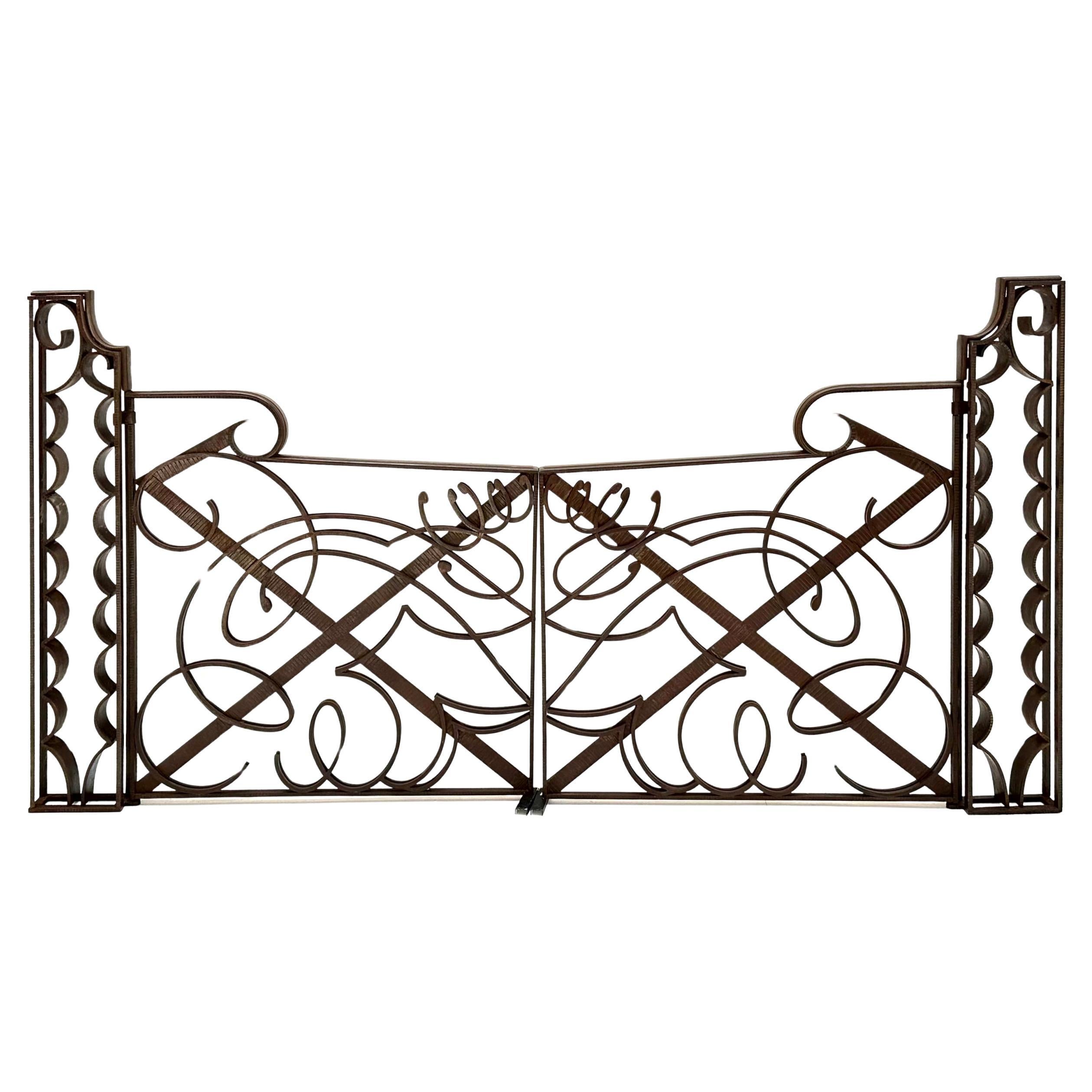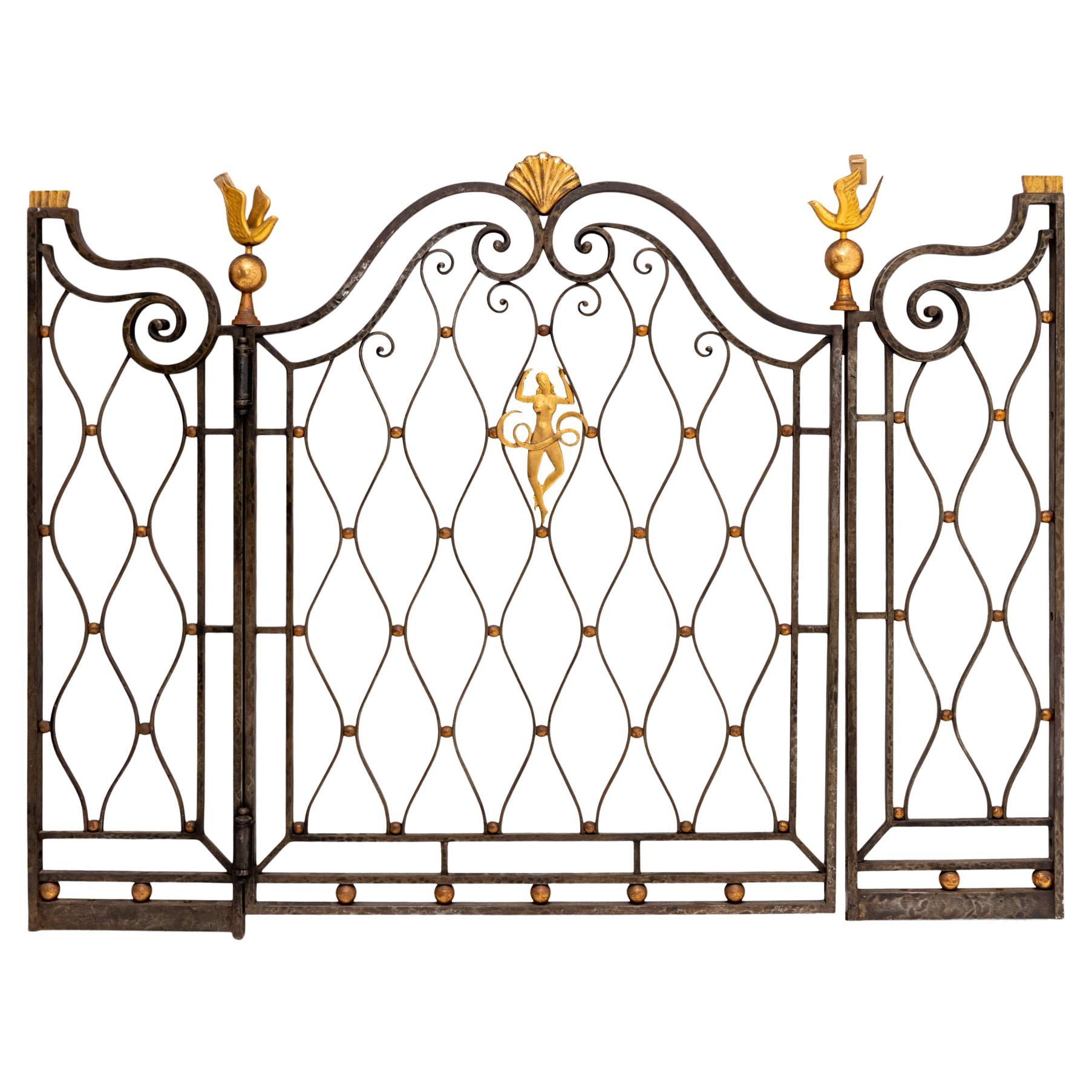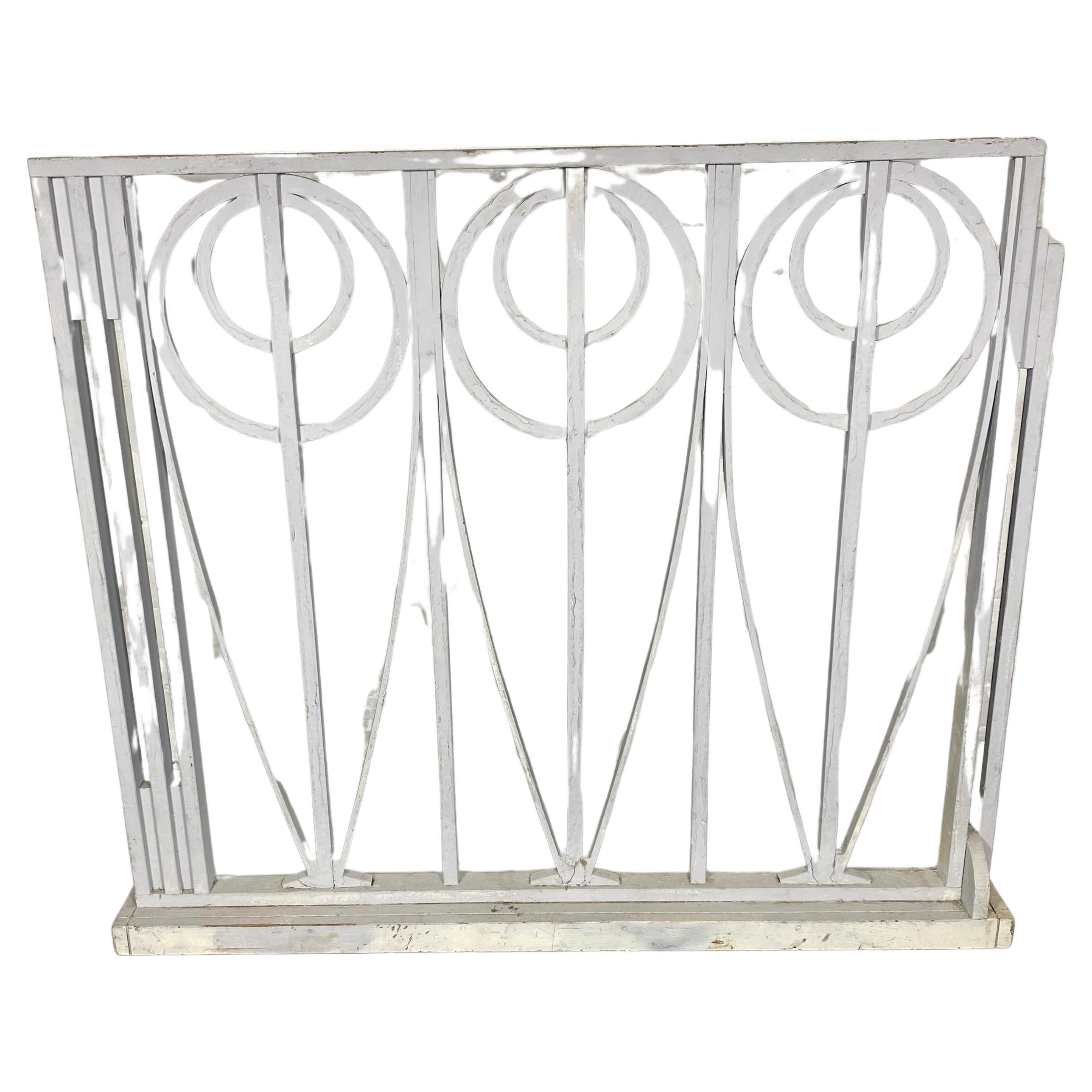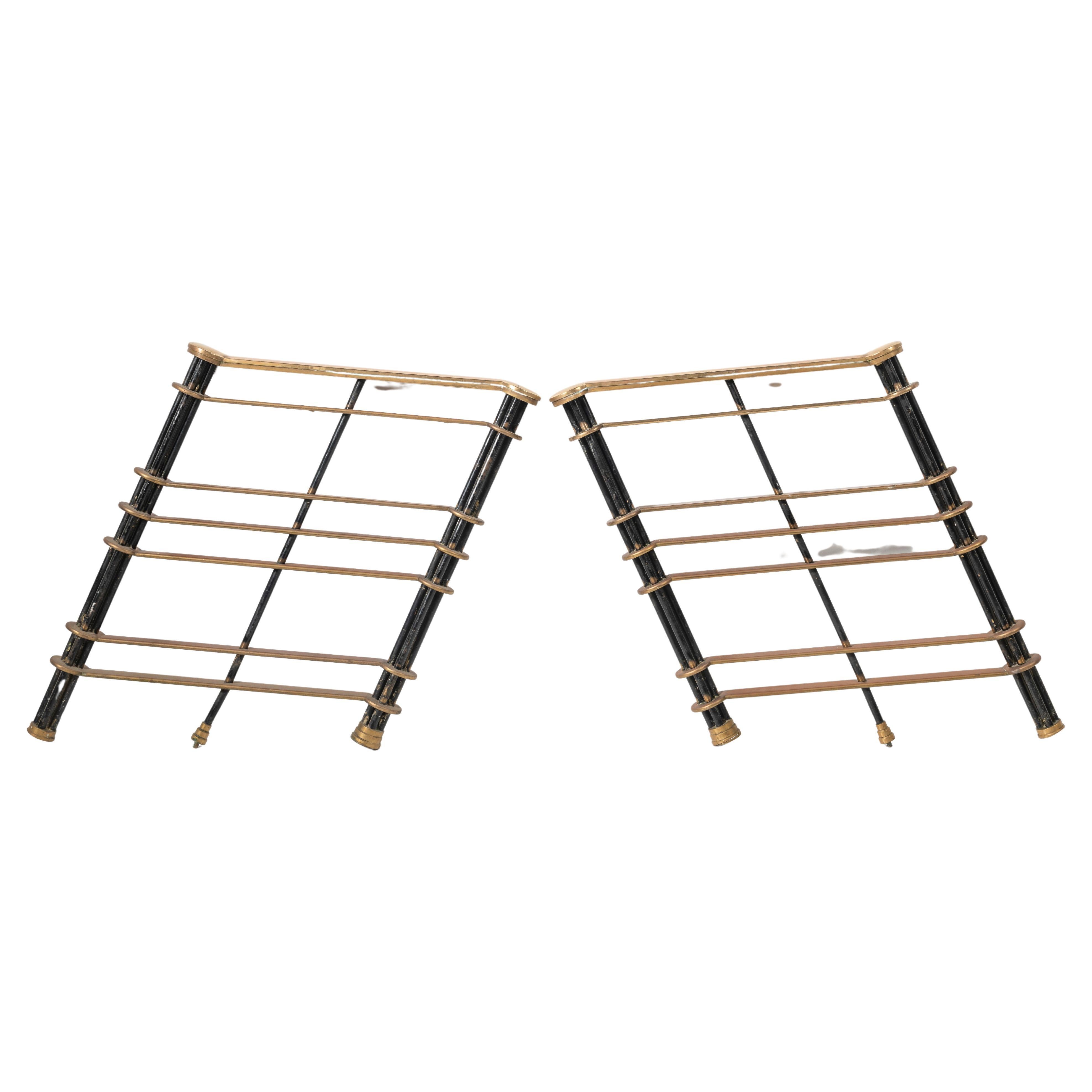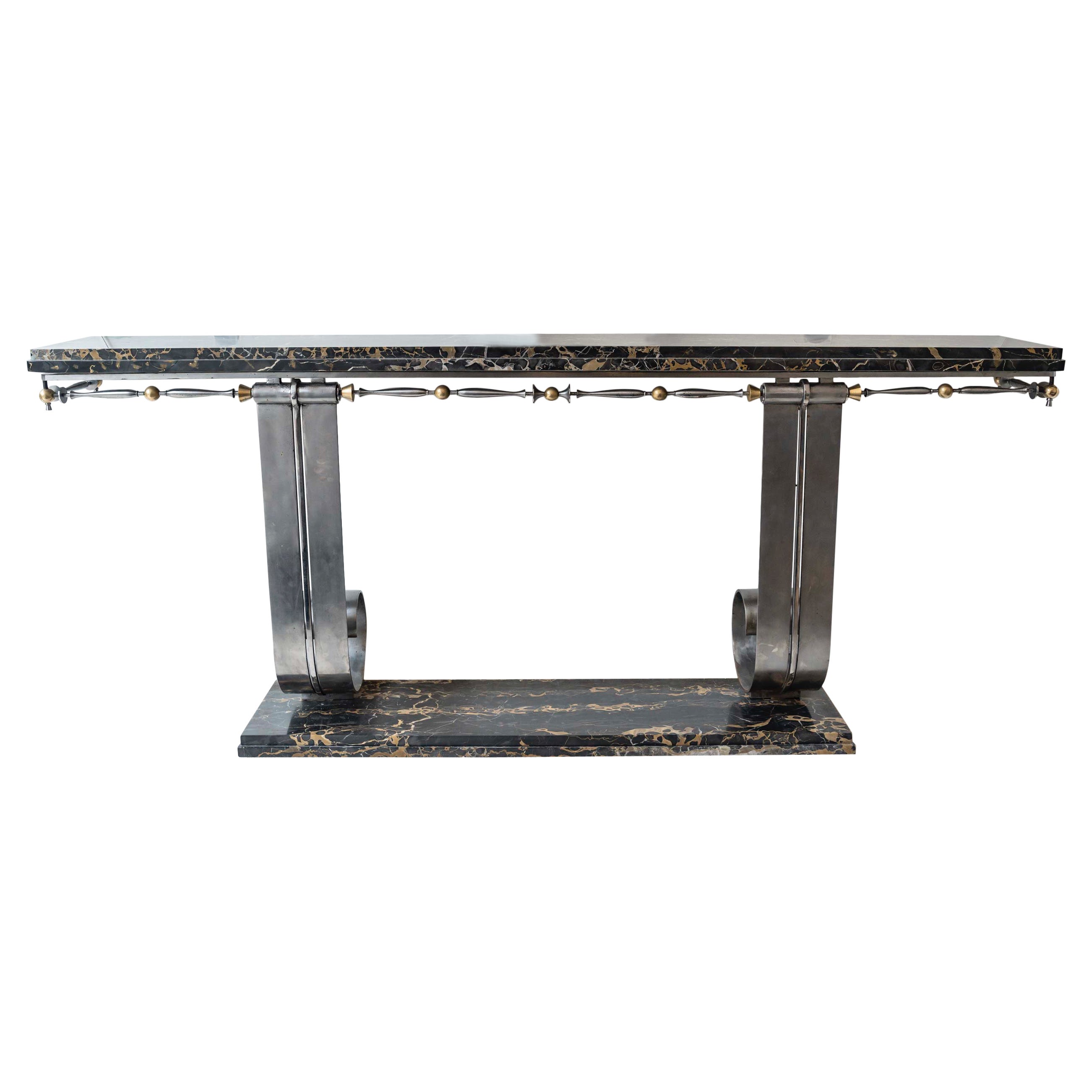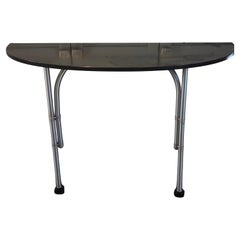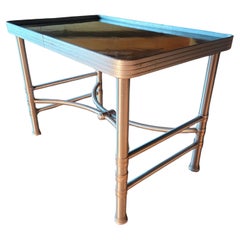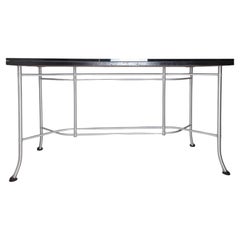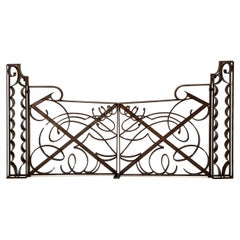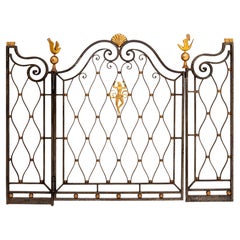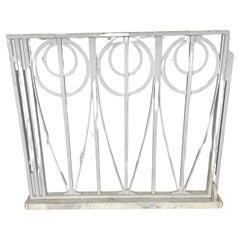Items Similar to Albert Chase McArthur Entrance Railing for the Arizona Biltmore 1928
Want more images or videos?
Request additional images or videos from the seller
1 of 15
Albert Chase McArthur Entrance Railing for the Arizona Biltmore 1928
$17,500
£13,415.97
€15,351.64
CA$24,731.44
A$26,882.10
CHF 14,390.42
MX$324,942.27
NOK 181,347.34
SEK 167,249.34
DKK 114,652.25
About the Item
Albert Chase McArthur ornamental railing designed in 1928 for the Arizona Biltmore in
Phoenix, Arizona.
The elegant line of abstract A's and reverse triangles form a 9'/ 10' section from the original 65' entrance railing to the Arizona Biltmore hotel in Phoenix, Arizona.
The railing was fabricated in the metal shop of the local rehabilitation hospital by recovering WWI veterans.
The archives at ASU were able to provide images of Albert Chase McArthur's original drawings of related railings for the Arizona Biltmore. the living room balcony and the Arizona Biltmore library balcony and stairs.
A section of this railing is in the collection of the Wolfsonian-FIU in Miami.
An interesting architectural element from an iconic architectural site.
- Creator:Albert Chase McArthur (Designer)
- Dimensions:Height: 36 in (91.44 cm)Width: 114 in (289.56 cm)Depth: 2 in (5.08 cm)
- Style:Art Deco (Of the Period)
- Materials and Techniques:
- Place of Origin:
- Period:
- Date of Manufacture:1928
- Condition:Wear consistent with age and use. In as found condition could be repainted.
- Seller Location:Camden, ME
- Reference Number:Seller: App 2351stDibs: U1208078984265
About the Seller
5.0
Gold Seller
Premium sellers maintaining a 4.3+ rating and 24-hour response times
Established in 1984
1stDibs seller since 2010
241 sales on 1stDibs
Typical response time: <1 hour
- ShippingRetrieving quote...Shipping from: Camden, ME
- Return Policy
More From This Seller
View AllWarren McArthur Demi-Lune Console Table, Anodized Aluminum, c. 1935
By Warren McArthur Corporation, Warren McArthur
Located in Camden, ME
A reserved and well-considered demi-lune console table by Warren McArthur, dating to around 1935. Works from this period reflect McArthur’s focus on lightweight structural systems an...
Category
Mid-20th Century American Machine Age Console Tables
Materials
Aluminum
Warren McArthur Side Table Anodized Aluminum Black Cafolite One Park Avenue 1938
By Warren McArthur Corporation, Warren McArthur
Located in Camden, ME
This Warren McArthur side table represents the designer’s most sophisticated period of production between 1936 and 1940. Featuring a black Cafolite top—a phenolic resin surface prize...
Category
Mid-20th Century American Art Deco End Tables
Materials
Aluminum
$3,900 Sale Price
25% Off
Japanese Carved Wood Ramna, "architectural transom" circa 1910
Located in Camden, ME
Japanese ramna crafted of carved sugi wood surrounded by a black lacquered frame. The ranma depicts a crane soaring above stylized pines and clouds.
The ramna would have original...
Category
Early 20th Century Japanese Architectural Elements
Materials
Lacquer, Wood
$937 Sale Price
25% Off
Warren McArthur Custom Model 1642-5 Glass Top Console 1935 Table Rome, NY
By Warren McArthur Corporation, Warren McArthur
Located in Camden, ME
vWarren McArthur custom ordered console/display table for the B&M Department Store of Peoria, Illinois with its attached Rome NY order label dated 2/35.
The standard dimensions of t...
Category
Mid-20th Century American Art Deco Console Tables
Materials
Aluminum
$6,150 Sale Price
25% Off
Leroy Setziol Early Masterwork-1963 16 Foot Sculpture Wood Relief Artwork
By Leroy Setziol
Located in Camden, ME
This monumental wood sculpture by Leroy Setziol (1915–2005) is a rare and significant early commission, created in 1963 for the National Bank of Portland, Oregon. Measuring an impressive 191" x 31" x 7", the piece marks a pivotal moment in Setziol’s career as he transitioned into large-scale architectural work—integrating fine art with the built environment in a way that would define his legacy.
Carved in his signature style of deeply incised geometric forms and rhythmic abstraction, the panel reflects Setziol’s exploration of nature, spirituality, and cultural symbolism. Commissioned during a period of progressive architectural development in the Pacific Northwest, the work exemplifies the region’s modernist ethos—where art and architecture were conceived in harmony.
Setziol would go on to complete numerous public commissions, collaborating with leading architects such as Pietro Belluschi and becoming one of the most influential wood sculptors of the 20th century. Early, large-scale works like this are exceptionally rare on the market and offer a unique opportunity to own a foundational piece of Pacific Northwest modernism.
This sculpture is not only a stunning example of Setziol’s craft—it is a historical artifact from a turning point in American architectural and design history.
The following is taken from the Portland Art Museum's profile of Leroy Setziol for their exhibit in 2015-16 celebrating the 100th year anniversary of his birth
"Leroy Setziol" Sept 5, 2015 – Oct 30, 2016
"A composer in wood, Leroy Setziol created lyrical sculpture that honors the beauty of a material strongly identified with the Northwest. The black walnut, teak, fir, and other woods he employed enhanced his complex gridded compositions, bringing them to life. A self-taught, intuitive worker, Setziol visualized his complex carvings using the grid as an armature to frame imaginative shapes. Throughout his career, his sculpture ranged from intimate works to large-scale public commissions. The largest work on display is an elegant, teak, two-panel wall relief from 1991. Twenty-three works are on view, including free-standing sculpture, totems, and a variety of wall reliefs.
Setziol’s sculpture gained greater recognition with Portland’s architectural community in 1964 when he was invited by Northwest Regionalist architect John Storrs to carve a series of large-scale relief panels for Salishan Lodge in Gleneden Beach...
Category
Mid-20th Century American Mid-Century Modern Wall-mounted Sculptures
Materials
Fir
Brutalist Torch Cut Wall Piece Style of Silas Seandel c.1980
By Silas Seandel
Located in Camden, ME
Complex overlays of brass, iron and copper make this Butterfly garden an interesting execution of metal surfaces. Presented in a heavy wooden frame with a secondary pierced iron arab...
Category
Late 20th Century American Mid-Century Modern Wall-mounted Sculptures
Materials
Brass, Copper, Steel
You May Also Like
Edgar Brandt - Paire de Grilles d'Intérieur en Fer Forgé (circa 1925-1930)
By Edgar Brandt
Located in NEUILLY-SUR-SEINE, FR
Edgar Brandt - Paire de Grilles d'Intérieur en Fer Forgé (circa 1925-1930)
Type : Paire de grilles d'intérieur en fer forgé
Date de création : Vers 1925-1930
Dimensions : Hauteur ma...
Category
Mid-20th Century European Art Deco Doors and Gates
Materials
Metal
Fence Element, Attr. Gilbert Poillerat, France 1940s
By Gilbert Poillerat
Located in Greding, DE
Fence element with gold patinated decors in the form of doves, shells, and a central female figure. For comparable pieces see Lit.: Francois Baudot: Gilbert Poillerat maitre ferronni...
Category
Vintage 1940s French Art Deco Architectural Elements
Materials
Iron
Architectural Art Nouveau Wood Element / fire screen manner of Rennie Mackintosh
By Charles Rennie Mackintosh
Located in Buffalo, NY
Architectural Art Deco / Nouveau Wood Element / fire screen ?Done in the manner of Charles Rennie Mackintosh,, Possibly built as a stage , theatre prop.. Well made,, wonderful desig...
Category
Vintage 1930s American Art Nouveau Architectural Elements
Materials
Wood
Pair of Classic 1930s Bronze Art Deco Entrance Railings
By Frank Lloyd Wright
Located in San Francisco, CA
This pair of classic 1930s bronze Art Deco entrance railings bronze are designed in the manner of Frank Lloyd Wright, and have polished hand rails and cluster supports. The pieces are thought to be from a bank...
Category
Vintage 1930s American Art Deco Architectural Elements
Materials
Bronze
Large Wrought-Iron Art Deco Console, attributed to Raymond Subes, circa 1930
By Raymond Subes
Located in Saint-Ouen, FR
Large Wrought-Iron Art Deco Console, attributed to R.Subes, circa 1930
Impressive and elegant French Mid-Century 1930 modernist / late Art Deco wrought-iron console
Attributed to R...
Category
Antique 1880s French Art Deco Architectural Elements
Materials
Griotte Marble
$52,500 Sale Price
30% Off
French 1940s Apartment Gate Attributed to Raymond Subes
By Raymond Subes
Located in Bridgewater, CT
Patinated and gilded wrought iron apartment gate from circa 1940, attributed to Raymond Subes.
Category
Vintage 1940s French Art Deco Doors and Gates
Materials
Wrought Iron
$15,200 Sale Price
20% Off
